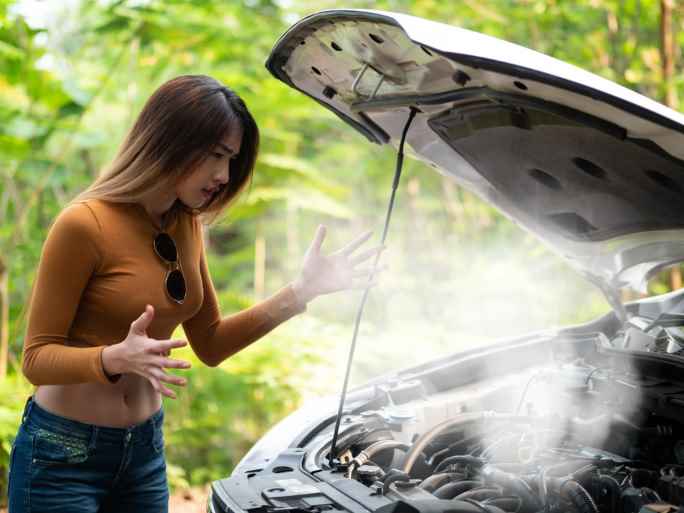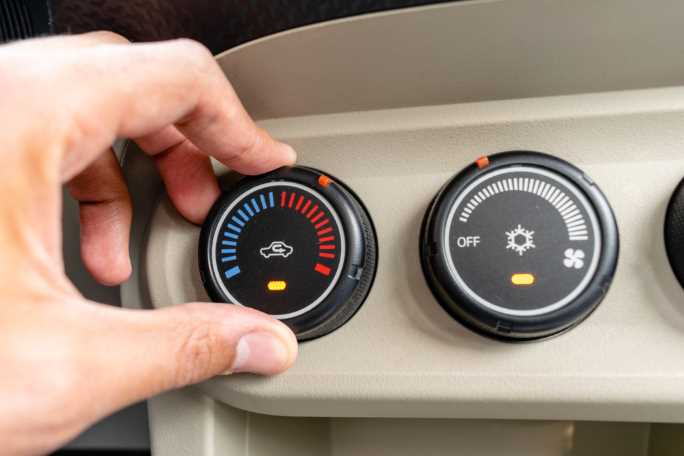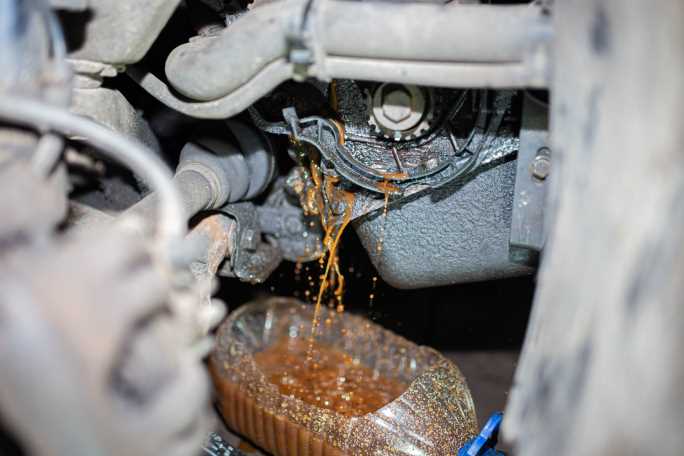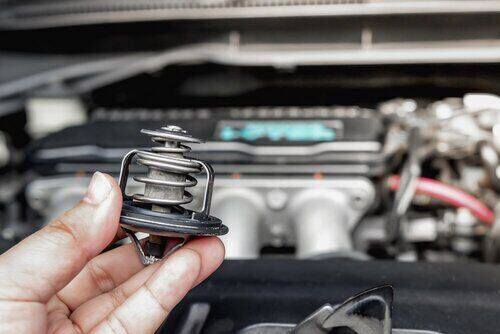A thermostat is a small part of a vehicle and simply controls the flow of coolant in the engine.
The thermostat also maintains a vehicle temperature in any weather.
But if this small part does not work properly, this can cause serious problems.
A bad thermostat can lead to damage the engine seriously.
If you are facing engine overheating or abnormal temperature in your vehicle, it may be a thermostat problem.
In this article, we will discuss with full information about Duramax bad thermostat symptoms.
Let’s start with what a Duramax thermostat is and how it works.
A car thermostat is a device that regulates the engine’s coolant temperature.
The thermostat is located between the engine and the radiator, and it opens and closes to allow coolant to flow through the engine.
The primary work of the thermostat is to control the temperature of the engine’s coolant.
The thermostat is closed when the engine is cold, and the coolant is redirected to the engine to warm it up.
The thermostat opens, Once the engine reaches its operating temperature and allows the radiator to keep the engine calm.
We have got an idea about the thermostat.
Duramax bad thermostat symptoms includes engine overheating, heater malfunction, coolant leaks, poor fuel economy, abnormal temperature readings, reduced engine power, etc.
Let’s discuss the symptoms elaborately.
1. Duramax Bad Thermostat Symptoms: Engine Overheats

The first and most common symptom of a bad thermostat is overheating the engine.
If the thermostat remains closed, the engine’s coolant cannot flow to the radiator, and the result is engine cannot cool down.
Therefore, the engine will be overheated, and this reading is shown on the dashboard.
This overheating causes high damage to the engine.
If your engine is overheated, it is also possible that you will not be able to drive after 15 minutes of starting the car.
So, if the thermostat has any problem and shows engine overheating symptoms, it is important to take the car to an expert mechanic.
The mechanic will check the thermostat properly and treat it properly.
2. Heater Malfunction

The coolant can warm up your engine as well as inside the car.
If you find any temperature difference inside your car, especially if the car is not warm-up, it is a heater malfunction.
It is important to consider it, especially if you are driving in a colder area or a colder country.
Heater malfunction is also an important symptom of a bad Duramax thermostat.
3. Coolant Leakage

Coolant leakage is one of the most common symptoms of a bad thermostat.
If your vehicle is leaking coolant, it affects the thermostat performance.
The thermostat regulates the coolant flow and keeps the engine at the correct temperature.
Due to coolant leakage, the thermostat does not work properly, the engine overheats, and the coolant can leak out.
In this situation, taking the vehicle to a service center is good, and checking it out properly.
If there is no serious problem with the thermostat, they solve it easily by closing leakages.
4. Abnormal Temperature Reading
An updated thermostat gate is crucial to ensure the coolant flows into the engine at the perfect temperature.
If the thermostat gate is not open and closed timely, the engine’s temperature will fluctuate.
This can cause the temperature gauge for abnormal responses.
Temperature fluctuation is a normal symptom of a bad thermostat.
Electrical failure and outside air in the coolant is also responsible for abnormal temperature reading, but we shouldn’t ignore this signal and check it properly.
By doing this, if there is any other problem in the car, it will also come out, and it will be possible to solve that problem too.
5. Raised Fuel Consumption

If the engine is overheating or overcooling, the exhaust emission will increase, and the engine will consume a lot of fuel.
A bad thermostat causes the engine to overheat or overcooled.
In this condition, the car cannot reach its actual operating temperature, and the fuel consumption will rise.
This is also a symptom of a bad thermostat, which will increase your monthly cost.
6. Erratic Changes in Temperature
If the thermostat fails, it erratically disturbs the whole temperature system of the car.
Keeping an eye on the dashboard’s needle.
If the needle spikes and drops, there is temperature confusion.
This problem occurred because of a bad thermostat.
7. Reduced Engine Power
If the thermostat is failing, it affects the car engines directly.
The car engine runs at an ideal temperature (about 90 to 105⁰C).
So, if the thermostat is failing, it causes overheating or may be overcooling of the engine.
In both conditions, the engine loses its normal performance, and the engine power will be reduced.
8. Strange Noises
If noise like curling, rumbling, and knocking comes from the engine, vibrator, or both, it is probably a symptom of a bad thermostat.
If this happens, it’s time to check them properly to find the problem.
There are almost the same symptoms of a bad thermostat in a 2004 Duramax.
5 Signs of a Bad Thermostat
There are 05 common signs of a bad thermostat that are given below.
- Abnormal temperature reading
- The abnormal temperature inside the car
- Leaking coolant
- Unusual sounds
- Heater malfunction etc.
Can I Drive with a Bad Thermostat
Yes, you can, but you shouldn’t.
You should go to the nearest mechanic shop as soon as possible.
Driving with a bad thermostat will cause damage to the other parts.
It will damage other parts and cost you more bucks than you expected.
So, as soon as you realized, there is a problem with the thermostat; don’t waste your time, take your truck to the nearest mechanic or Change the thermostat by yourself.
How to Check a Car Thermostat
It is good to check the car’s coolant flow and temperature before removing the thermostat.
It would save you money if the thermostat was okay.
So, let’s see the checking steps.
First, Check the Coolant Flow Through the Thermostat, Then-
- Keep your car at ground level.
- Find out the radiator hose, and an attached thermostat at the end of the hose.
- You can check the car service manual if you face problems finding the thermostat.
- Now, put out the radiator cap and keep the engine idle.
- See if the coolant flows properly; it means that the thermostat is stuck open.
- If the coolant was not flowing, wait for the engine to warm up.
- The coolant starts flowing when warmed up to a certain temperature.
- The warm-up process takes 10-20 minutes normally.
- If the temperature gauge on the car dashboard rises but the coolant does not start to flow, the thermostat is stuck closed.
- But if you find all thing is normal and the coolant flow normally, then there is another reason for engine overheating.
Now It’s Time to Check the Temperature of the Coolant-
- To check the temperature of the coolant, keep the engine and radiator cool.
- Idle the engine and use a thermometer to take the reading of the engine cylinder and upper radiator hose.
- Take readings, in the same manner, every 5 minutes and take these readings at least three times.
- The thermostat is stuck open when the temperature does not increase very much.
- If the temperature of the radiator hose remains the same but the dashboard reading show abnormally rising, it means the thermostat is stuck closed.
- On the other hand, if both engine cylinder temperature and radiator hose temperature rise similarly, the coolant flows through the thermostat properly.
Checking the Thermostat Outside the Car-
- You need a pot with boiling water and a thermometer to check the thermostat outside of the car.
- Put the thermostat in the pot and try to make a difference between the thermostat and the pot button for the best result.
- Check the thermostat opening temperature using a thermometer.
- Record the temperature at which the thermostat starts to open and the temperature when it is fully opened.
- Now take the thermostat out of the pot, let it cool down, and notice that it gradually shuts off.
- As different thermostats open at different temperatures, compare the difference in the temperature readings with the car owner’s manual, and you can easily understand the condition of the thermostat.
You can watch the process in this YouTube video.
Replacing a Car Thermostat
After using the method mentioned above, if you find that the thermostat has failed, it is good to replace it.
While replacing the thermostat, mind it, not just replace it but also add fresh coolant.
Because only removing the thermostat cannot solve the problem properly.
Try to buy a premium thermostat and avoid the cheaper thermostats because the premiums are very reliable.
If you want to replace the thermostat by yourself, here is a suggestion-
- Remove the negative battery wires.
- Drain the coolant from the radiator properly.
- The radiator hose is attached to the thermostat housing, now a separate radiator hose.
- Pull out the thermostat housing bolts and housing itself.
- Pull out the old thermostat and install the new one.
- Reinstall the thermostat housing and bolts.
- Reconnect the radiator hose.
- Fill the radiator with fresh coolant.
You can watch this video for more information.
FAQs
Can I Drive with a Bad Thermostat?
You should not drive with a bad thermostat.
The thermostat is a crucial component of your vehicle and regulates the engine temperature by controlling coolant flow.
So, if you drive with a faulty thermostat, it may cause serious vehicle problems, such as:
- Engine overheating
- Reduced vehicle performance
- Reduced fuel efficiency
- Emission issues
Therefore, you should avoid driving your vehicle without fixing thermostat problems.
Can a Bad Thermostat Cause Power Loss?
Yes, a bad thermostat causes power loss.
A defective thermostat is typically stuck closed or open.
If the thermostar is stuck closed, it cannot regulate coolant properly and causes engine overheating.
As a result, the vehicle goes into limp mode, which reduces engine power as well as acceleration speed.
On the other hand, if the thermostat is stuck open, the engine cannot reach its operating temperature.
As a result, the engine’s power will be reduced.
Will a Bad Thermostat Throw a Code?
A bad thermostat throws a code in some cases, but not all.
It depends on the severity of the problem and the type of thermostat.
How Do You Troubleshoot a Thermostat?
Here is the way-
- By cleaning the dust and corrosion
- Reset the thermostat
- Checking the wiring
- Adjust the power heat anticipator
Will the heater work if the thermostat is stuck closed?
No, the heater will not work properly if the thermostat is stuck closed.
Because a stuck-closed thermostat causes overheating and it will affect the vehicle heating system.
Therefore, a stuck-closed thermostat makes the vehicle interior cold.
Final Thoughts
If your car has any Duramax Bad Thermostat Symptoms listed above, it needs to be fixed as soon as possible.
A bad thermostat can cause your car engine to overheat.
This can lead to engine damage.
It can also cause your car to use more fuel than it should.

